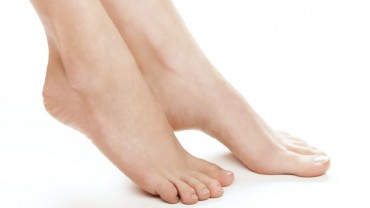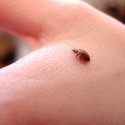13 Natural Remedies for Allergic Rhinitis
The changing of the seasons is, for many with allergic rhinitis, a dreaded time of year.
Often referred to as “hay fever,” “seasonal allergies,” or just plain “allergies,” allergic rhinitis is a condition that is actually chronic and, in many cases, lasts year-round.
It is estimated that 10-20% of the United States population is affected by allergic rhinitis.
This condition can be chronic, lasting for years.
It can even be a life-long condition.
It can sometimes lead to inner ear infections and/or sinusitis.
Although it is considered chronic, allergic rhinitis treatment is available and often effective.
Many who suffer from allergic rhinitis will visit their primary care physician (PCP) or allergy specialist to help them diagnose and treat their allergic rhinitis.
While these treatments tend to be predominantly focused on injections and oral medications, there are natural remedies for allergies that can be done in the comfort of your own home.
If you believe that you might be suffering from allergic rhinitis, read on to learn more about what it is, what the symptoms are, how to avoid it, and what home remedies for allergies you should use to combat allergic rhinitis.
What is Allergic Rhinitis
Allergies and allergic rhinitis have actually been a topic of inquiry for hundreds of years.
In fact, a 10th-century Persian philosopher and physician by the name of Rhazes studied it.
In the 1850’s, pollen was finally identified as an allergen by the British scientist Charles Blackley.
About 50 years later, Austrian pediatrician and scientist Clemens von Pirquet helped coin the term “allergy.”
Allergic rhinitis can best be described as an allergic response that happens in the nose after inhaling a substance.
This results in the eyes becoming watery and itchy, a scratchy and sore throat, and coughing or sneezing.
When you inhale various allergenic particles from the surrounding air, your immune system recognizes these foreign invaders and goes on the attack.
Sneezes, coughs, runny noses, watery eyes, and other symptoms are really the results of your immune system’s attempt to purge the inhaled allergens from your body.
In some cases, particular allergens will affect a person less and less over time, even to the point where the individual no longer has a noticeable physical response to these allergens.
The opposite is also true for some people; what might not have affected you in the past could cause allergic rhinitis now or in the future.
So, who is at risk for developing allergic rhinitis?
Statistics collected over the years show that men are more likely to have allergic rhinitis than women.
Also, those with autoimmune disorders or otherwise compromised immune systems are more vulnerable to allergic rhinitis since their immune systems cannot properly fight off allergenic invaders.
Those who smoke or are constantly exposed to second-hand smoke, suffer from other types of allergies, or who have family histories of allergies and allergic rhinitis, are also at risk.
Allergic Rhinitis Symptoms
Symptoms of allergic rhinitis can vary among allergy sufferers, the types of allergens they’re exposed to, and whether or not they have seasonal or perennial (year-round) allergic rhinitis.
While some cases are not considered severe, the cases that are can deeply impact a person’s quality of life, sometimes on a fairly permanent or frequently recurring basis.
Allergic rhinitis symptoms most commonly include:
- Frequently sneezing, especially after waking up in the morning.
- Watery and itchy eyes.
- A runny nose and postnasal drip. (Drainage is usually clear and liquidy unless you have a sinus infection, which causes drainage to be yellowish and thicker.)
- A dry and scratchy throat and hoarse voice.
- Nasal congestion and stuffiness.
- Dry and itchy ears.
- Pain in and/or around the ears.
- Loss of smell.
- Wheezing and/or coughing.
- Breathing through the mouth instead of the nose.
- Feeling fatigued.
- Headaches, migraines, or a feeling of pressure in the head.
For many people, these symptoms tend to come and go.
Symptoms tend to be the worst in the morning or immediately after being exposed to certain allergens (such as mold, mildew, and dust).
Some people also experience cross-reactivity.
For example, an individual who reacts to grass pollen might also react to wheat since these two substances share some similarities.
How to Avoid Allergic Rhinitis
Allergy sufferers tend to feel that it is often impossible to avoid allergens, especially allergens that exist outside or in indoor locations where they have no control over their presence.
However, those with allergic rhinitis can learn how to avoid the allergens that trigger their reactions.
Controlling your exposure to allergens starts at home, and methods for doing this include:
- Keeping your home clean from dust, including dusting regularly and getting rid of dust mites. This includes regularly washing linens to rid them of dust and dander.
- Thoroughly clean up after pets and remove pet dander. This can involve regularly washing linens, sweeping tile and wood floors every day, and vacuuming carpeted areas every one or two days.
- Keep indoor mold and mildew at bay by cleaning the areas where they tend to grow. Showers, toilets, and sinks should be kept clean and as free from moisture as possible after use.
- If pollen counts are high during warmer seasons, try to stay indoors as much as possible to avoid pollen.
- Keep your windows and doors shut at night and during times of high pollen count.
- Turn on your air conditioning to help control any pollen that gets inside your house. Using a fan with the window open could potentially bring in more pollen, so close your windows and doors and keep the air conditioner running for a few hours.
- Keep your lawns trimmed. Mow on a weekly basis or, if the outdoor allergens are too much for you, have someone else mow for you. You might also need to limit your time spent gardening.
- If you work or do outdoor activities for an extended period of time, shower after you go back indoors.
- Do not hang your clothes out to dry, as this can trap allergens in the fabric. Instead, dry your clothes in a vented dryer.
- Since mold spores are most likely to be airborne during wet, rainy days, you might want to consider staying indoors.
- Mold can grow in abundance in clogged rain gutters. Keep your home’s gutters cleared of leaves and other debris so that mold growth is limited.
- Mold can also grow in your car’s air conditioning unit, so make sure you buy a proper mold remover from an auto parts store to keep mold from growing there.
Now that you are aware of ways that you can avoid allergens that trigger allergic rhinitis, let’s discuss home remedies for treating symptoms when they do occur.
Allergic Rhinitis Remedies
Steaming Water
One of the most common home remedies for allergies is steaming water.
Regularly inhaling steam can help you clear your clogged-up nasal passages of thick mucus, as well as any trapped particles that might be causing an allergic reaction.
In order to steam water, you will need to follow these steps:
- Boil water on the stove in a pan.
- Once the water is boiling, carefully add it to a large bowl.
- Add 2 or 3 drops of your favorite essential oil to the water (this step is optional).
- Use a bath towel to cover the back and sides of your head. Carefully lean your head over the bowl, keeping your face above the top rim.
- Spend about 5 to 10 minutes gently inhaling the steam and exhaling. Slow, deep breaths tend to work the best.
- Use a tissue and gently blow your nose.
- Repeat a few times a day until your symptoms start to clear up.
You can also take a hot shower or bath to help clear up nasal congestion.
This method is ideal for young children, as a shower or bath is safer for them.
Saline Rinse
Another common allergic rhinitis treatment is making your own saline rinse.
For this method, you will need a nasal bulb.
This item can be purchased over-the-counter at most grocery stores and pharmacies.
To create your saline rinse, you will need to:
- Place 2 cups of warm, distilled water into a small bowl. Add a pinch of baking soda and 1 teaspoon of salt, stirring them together.
- Draw the saline water into your nasal bulb, then gently pump into your nose, one nostril at a time.
- Let the saline rinse run through the other nostril or down the back of your throat.
- Blow your nose to drain excess mucus.
- Repeat several times per day until your symptoms improve.
Turmeric
Turmeric is a strong anti-inflammatory and antioxidant.
It can be purchased in most stores and made into several different types of remedies.
One of the easiest and most effective remedies involving turmeric is to add 6 tablespoons of ground turmeric to 6 tablespoons of raw honey (or honey substitute if you are vegan).
Mix the ingredients well and store them in an air-tight container in your kitchen.
Orally ingest 1 teaspoon twice a day until symptoms subside.
You can also mix turmeric in with your meals, as it is an excellent seasoning that can still combat allergic rhinitis when eaten in food.
Ginger
Ginger is another powerful anti-inflammatory and antioxidant that pairs well with turmeric in tea.
It can also be used as a seasoning in food.
Ginger is a natural antihistamine that can get rid of even the most persistent symptoms.
One of the most helpful and delicious ways to use ginger as a remedy is to add 1 tablespoon of ground ginger to 1 cup of water.
Add a small cinnamon stick (or a dash of ground cinnamon) and a few cloves.
Boil for 5 minutes, add honey (or honey substitute) and lemon juice, then sip away!
Doing this three times a day during allergy season can produce optimal effects.
Apple Cider Vinegar
Another helpful antihistamine and antibiotic substance is apple cider vinegar.
Studies have shown that drinking even a tablespoon of apple cider vinegar every day can help keep your immune system in balance.
It can also kill numerous types of bacteria, making it a fantastic antibacterial.
To make an apple cider vinegar remedy, follow these simple steps:
- Draw up a glass of warm water.
- Add 2 teaspoons of unfiltered organic apple cider vinegar.
- Add 1 teaspoon of honey (or honey substitute) and 1 teaspoon of lemon juice. Stir until mixed.
- Drink three times per day or until your symptoms subside.
Garlic
Garlic is yet another powerful antihistamine, as it is a rich source of quercetin.
It also has numerous other benefits, such as boosting your immune system, improving bone health, and detoxifying your body of heavy metals.
Garlic is a great seasoning for meals.
Also, you can try chewing 2 or 3 raw garlic cloves each day to help reduce symptoms of allergic rhinitis.
Oil Pulling
Oil pulling is one of the lesser known at-home remedies for dealing with allergic rhinitis.
The term “oil pulling” refers to the fact that this Ayurvedic remedy involves rinsing your mouth with coconut or sesame oil.
To try this technique, follow these steps:
- Measure 1 tablespoon of coconut or sesame oil (at room temperature, so don’t heat it up) and put it into your mouth. Do not swallow.
- Swish the oil around in your mouth for about 15 to 20 minutes.
- Spit the oil out, then thoroughly rinse your mouth with lukewarm water.
- Do this once every morning before brushing your teeth.
Note that swallowing the oil means you’re swallowing the toxins the oil was meant to draw out.
This is why it is important to spit the oil out.
Vitamin C
When you are trying to cope with allergic rhinitis, eating enough Vitamin C-rich foods is crucial.
Vitamin C not only reduces symptoms due to its antihistamine properties, but it also assists your immune system in purging your body of harmful toxins.
Some of the most Vitamin C-dense foods that you should eat are:
- Oranges
- Broccoli
- Lemons
- Bell peppers
- Grapefruit
- Kale
- Brussels sprouts
- Strawberries
- Kiwi
- Guava
Stinging Nettle
Another less popular at-home remedy for coping with allergic rhinitis is stinging nettle.
Also known by the name Urtica dioica, stinging nettle plants have long been used medicinally due to their anti-inflammatory and antihistamine capabilities.
Using stinging nettle can help to alleviate itchy eyes and nasal congestion.
To prepare stinging needle, you will need dried stinging nettle leaves.
Then, follow these steps:
- Heat 1 cup of water, then add 1 tablespoon of dried stinging nettle leaves.
- Cover the cup and allow it to steep for 5 minutes.
- Strain the leaves and add honey (or honey substitute).
- Drink this tea 2 or 3 times per day until your symptoms clear up.
Note that children and women who are pregnant should avoid using this remedy, although it is generally safe for everyone else.
Probiotics
Within our guts exist good and bad bacteria.
A buildup of bad bacteria can lead to a massive array of health issues, including allergies and allergic rhinitis.
Getting enough probiotics, especially Lactobacillus acidophilus, can help lessen the frequency and severity of your symptoms, as it introduces healthy bacteria back into your digestive system.
Many different types of yogurt and kefir (including non-dairy types) contain prebiotics and probiotics.
You can also get Lactobacillus acidophilus from soy-based products (like tempeh) and other types of fermented foods.
Even just one single-serve package of yogurt per day can vastly improve your health.
Flaxseed Oil
Flaxseed is normally what vegans and vegetarians choose over fish oils when it comes to getting their omega-3s.
It is an extremely powerful anti-inflammatory agent and is even recommended for Sjogren’s Syndrome patients who experience chronic inflammation, dry eyes and throat, and mucus drainage.
For this remedy, all you need to do is ingest orally a single tablespoon of flaxseed oil each day until your symptoms improve.
Just that tablespoon alone contains plenty of necessary fatty acids (13.6 grams of fat, 0.01 grams of protein, and 120 calories).
Castor Oil Pack
Castor oil is a remedy that can be used by teenagers and adults.
Castor oil works to boost your immune system and help fight off bacteria and viruses.
It is mostly made up of fatty acids, approximately 90% of which is ricinoleic acid, which is known for its healing abilities.
You can make your own castor oil pack with hexane-free castor oil, dye-free and unbleached wool or cotton flannel, a wrap-around pack, a heating pad or hot water bottle, a Mason jar with a lid, and an old towel or cloth to clean up any spills.
To make a pack, carefully follow these steps:
- Cut a large piece of wool or flannel, then fold it into thirds. You need to make three layers. Your original piece should be about 20 inches by 20 inches, then shrink down to 7×10 once folded.
- Soak the material in castor oil by placing it inside the Mason jar. Add 1 tablespoon of castor oil every 20 minutes. Make sure you do this the day before you use it so that it has time to soak in.
- Remove and unfold the cloth or wool after it has soaked for a day.
- Lie down on an old towel, then place the cloth on the body part where you need it. You can use the wrap-around pack and put the heated pack on top of it.
- Relax with your feet elevated for 30 minutes to an hour.
- After you’re done, clean up (using baking soda to remove any castor oil left on your skin) and drink some water in order to stay hydrated.
Note that this is a time-consuming process, so you will need to plan ahead.
Cold and Hot Compress
Last, but certainly not least, are cold and hot compresses.
Never underestimate the power of a compress.
Alternating between one hot and one cold compress can help to alleviate pain and inflammation in the sinus cavities.
For the compresses to be able to do their work effectively, you need to start by placing the cold compress on your sinuses.
Leave the cold compress in place for two minutes.
After those two minutes are up, swap it with the warm compress.
The cold compress works to numb the pain, then the heat relaxes the muscles.
Warm compresses work well for dry eyes, and cold compresses tend to be beneficial for treating itchy eyes.
Some people, however, find that hot compresses work better at breaking up their sinus congestion, allowing trapped mucus to flow more freely.
Conclusion
These natural remedies for allergies are just 13 of many that you can try at home.
There are many types of at-home remedies and variations of those remedies circulating online.
Of course, there are also many over-the-counter (OTC) and prescribed medications (including allergy shots) that are available as well.
However, it is sometimes best to start out with at-home treatments, as they tend to be the least invasive and less expensive.
If you try these remedies and experience no or minimal relief, you should consider contacting your primary care physician or an allergy specialist to learn more about diagnosis and treatment options.
Remember that, when using at-home remedies, you might need to try a few different ones before you find something that works for you.
There is relief out there!
Your allergic rhinitis does not have to control your life, and using a good at-home remedy can help.
FDA Compliance
The information on this website has not been evaluated by the Food & Drug Administration or any other medical body. We do not aim to diagnose, treat, cure or prevent any illness or disease. Information is shared for educational purposes only. You must consult your doctor before acting on any content on this website, especially if you are pregnant, nursing, taking medication, or have a medical condition.
HOW WOULD YOU RATE THIS ARTICLE?





